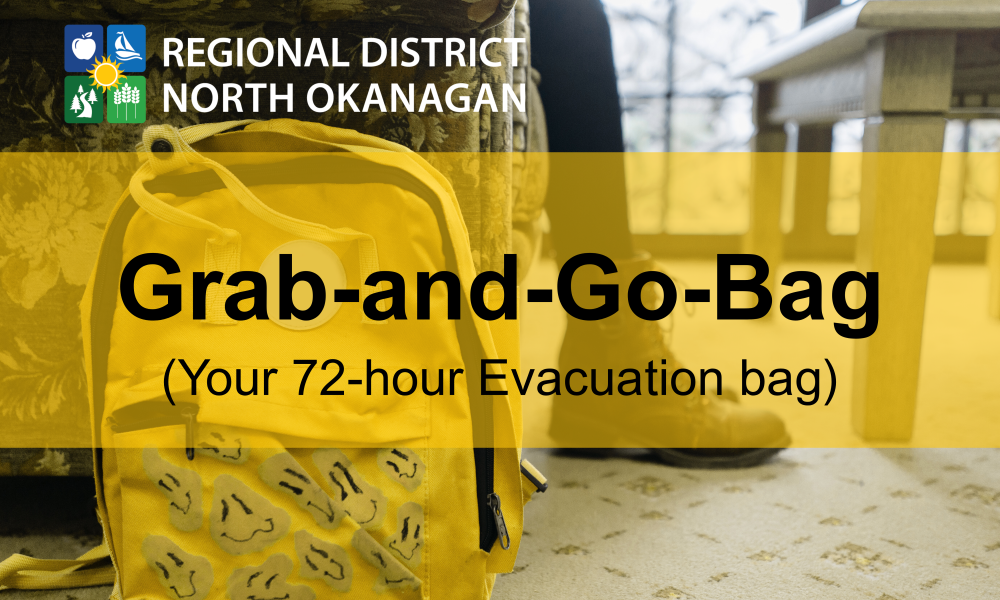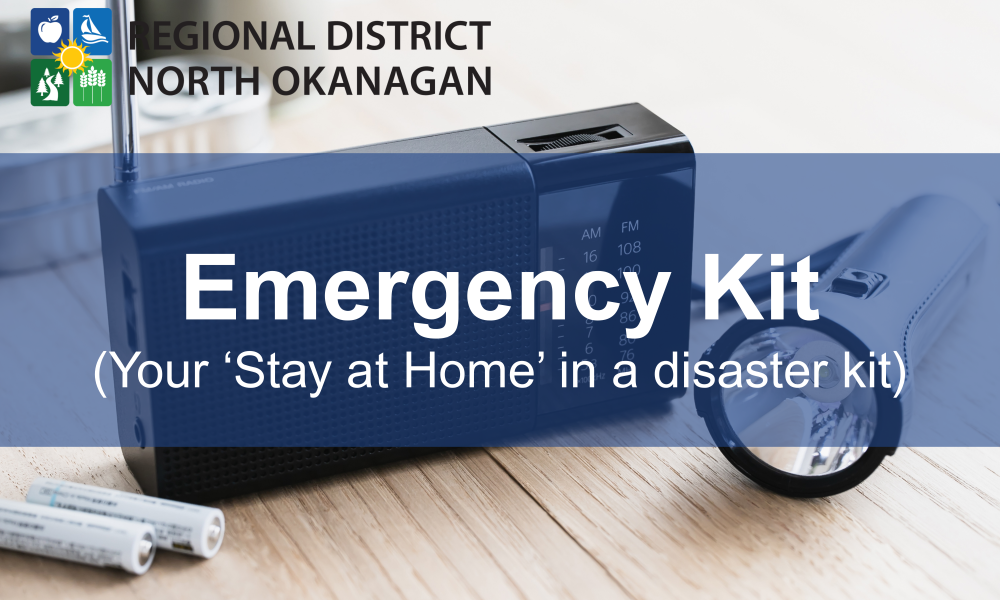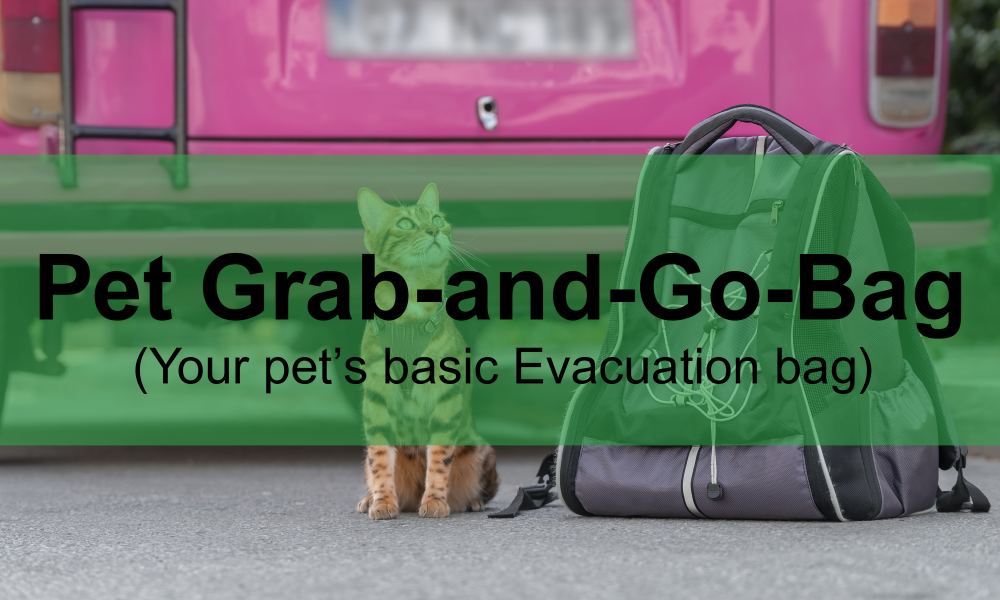Grab-and-Go-Bag

Your 72-hour evacuation bag.
Emergency Kit

Basic supply list to build your emergency kit
Pet 72-hour Grab and Go Bag

Basic needs for your pet
Register with your BC Service Card

Registers you and your household for future emergencies
An Emergency Kit VS a Grab-N-Go bag

Which one do you need?
Alerts sent straight to you

Be the first to know about an emergency that may affect you
Stories - The first 72 hours

What others have done to get through those first crucial hours of an emergency.
The North Okanagan faces risks from floods, storms, extreme temperatures, and wildfires. Our reliance on power, water, and internet services makes us vulnerable during emergencies. By taking proactive steps in emergency preparedness, we can enhance our own resilience and support our community. Visit GetPrepared.ca.
|
|
|
|
|
|
What risks should you plan for?
What is a State of Local Emergency (SOLE) all about?
A municipality or the Regional District may declare a State of Local Emergency (SOLE) to aid in the emergency response and recovery process. The RDNO may also activate the Emergency Operations Centre (EOC) to manage and support response and recovery efforts outside municipal boundaries. In acute emergencies, the Provincial Emergency Program administers the Disaster Financial Assistance Program.
More Resources
The Provincial Emergency Program is administered through the regional office in Kamloops. For more information or to contact their office, please visit www.gov.bc.ca/PreparedBC.
You can find additional emergency preparedness information at:

